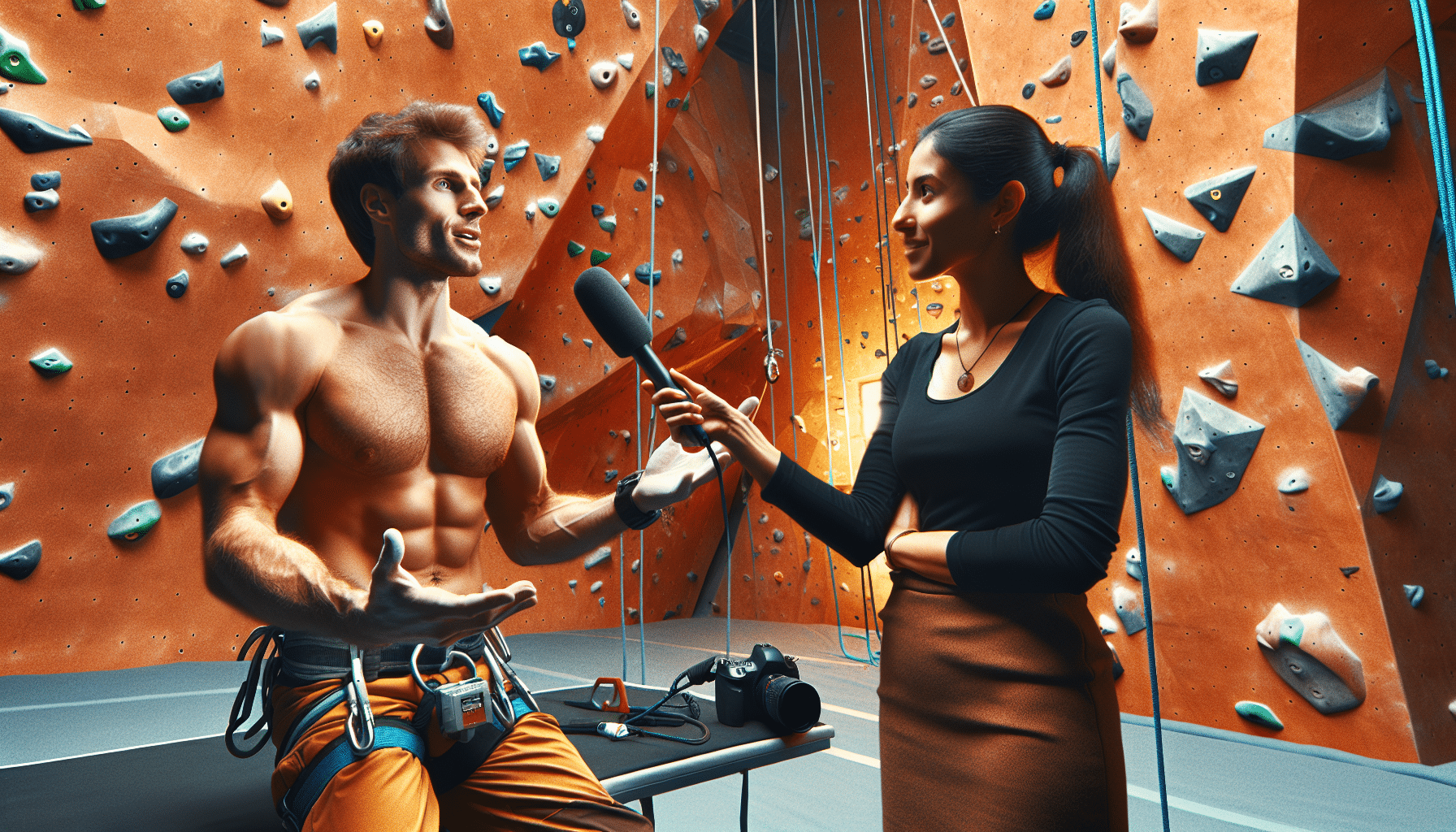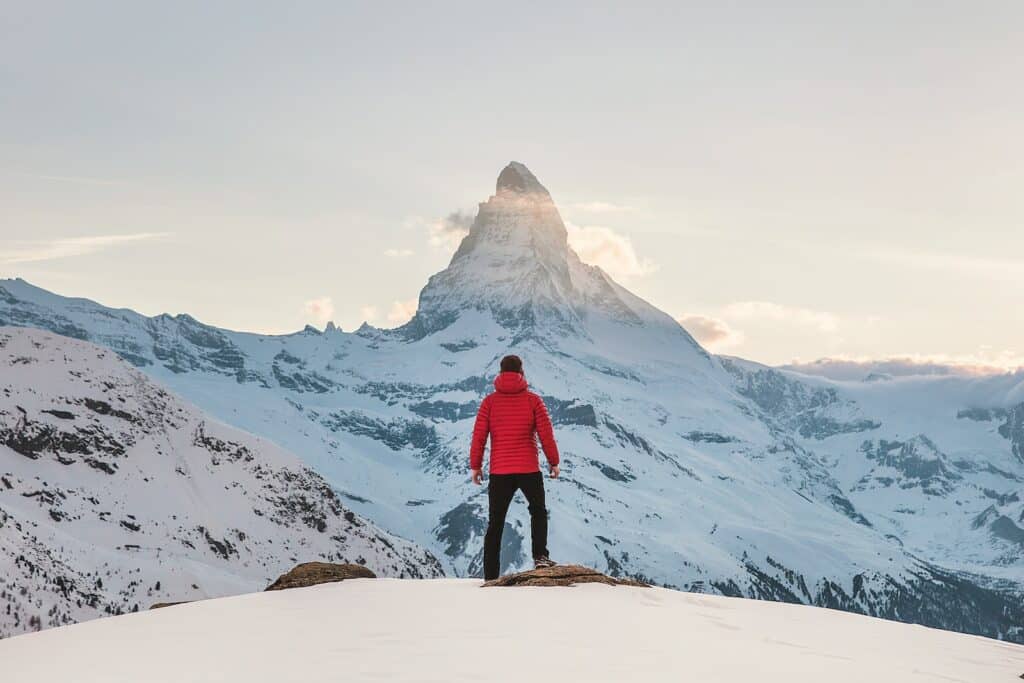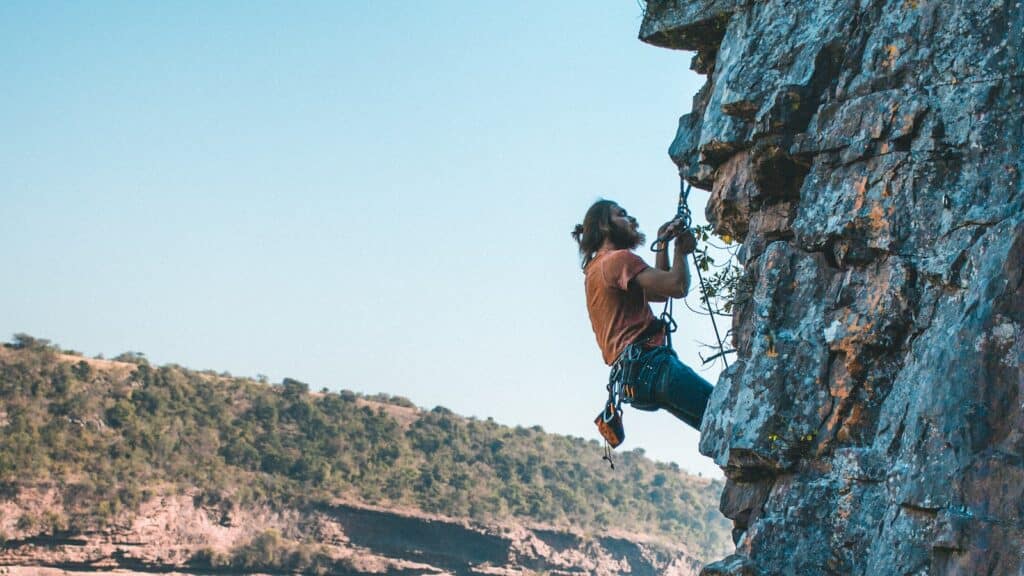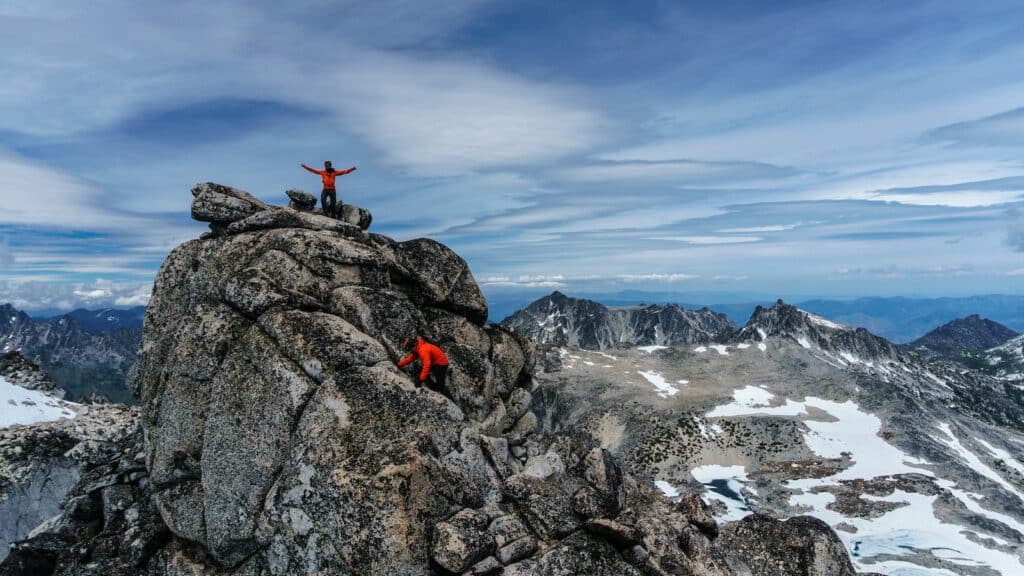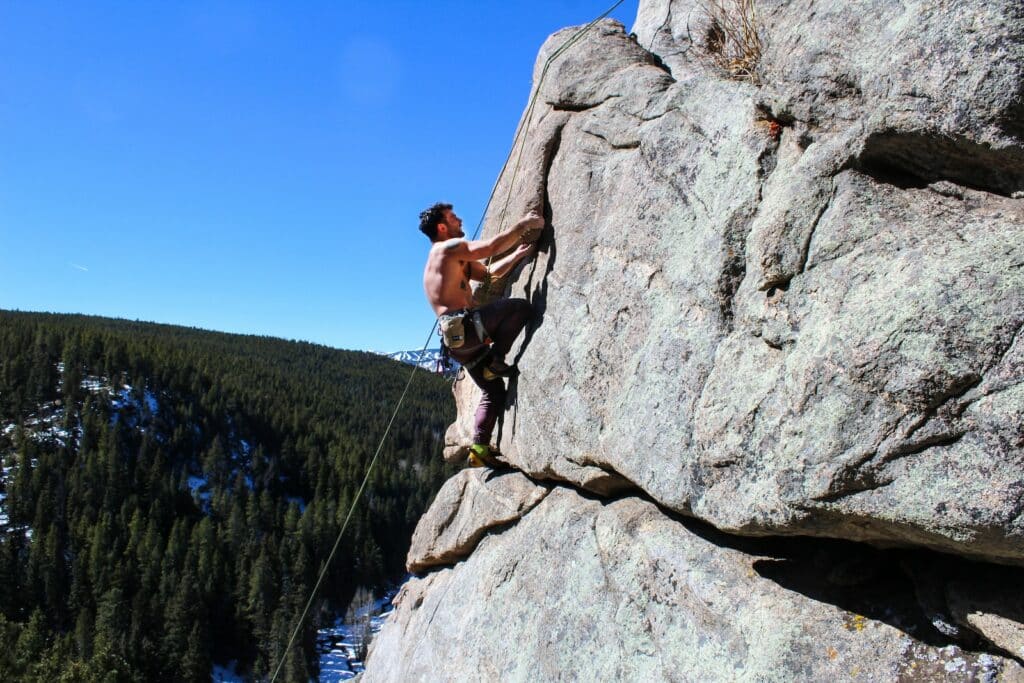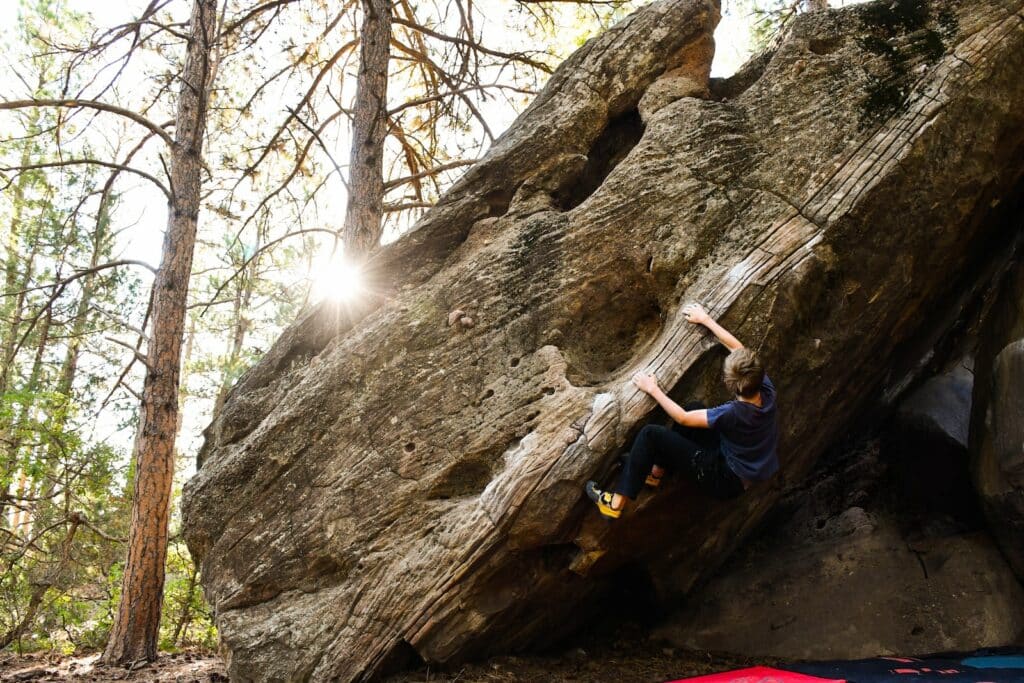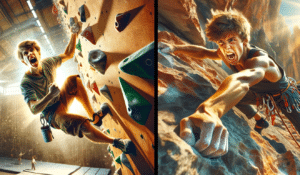Table of Contents
ToggleJourney to Becoming a Pro Climber
In this section of our pro rock climber interview, we delve into the early years of my climbing journey, exploring my beginnings and some of the most notable experiences that have shaped me into the climber I am today.
Inspiring Beginnings
My love affair with rock climbing began at the tender age of 15 when I first tried the sport (My Rock Climbing Journey). I was immediately captivated by the physical challenge and the sense of freedom it offered. The inspiration to become a professional climber didn’t come until later, after watching a documentary about professional climbers and their awe-inspiring feats. Seeing these climbers conquer towering cliffs and mountains ignited a spark in me that led to a deep-seated desire to pursue climbing as more than just a hobby.
Notable Climbing Experiences
As I progressed in my climbing journey, I had the opportunity to climb in various locations around the world, including Yosemite National Park in the United States and the Dolomites in Italy. Each location offered unique challenges and learning experiences that contributed to my growth as a climber.
One of my most notable experiences was climbing El Capitan in Yosemite. This was a multi-day climb that tested my physical stamina and mental fortitude. The feeling of accomplishment when I reached the summit was incomparable and served as a reminder of why I love this sport so much.
Through all these experiences, I’ve learned that climbing is not just about reaching the top. It’s about the journey, the challenges you overcome along the way, and the personal growth that comes with it.
Stay tuned for more insights into the world of climbing, from the evolution of the sport to valuable lessons and advice for aspiring climbers.
The Evolution of Rock Climbing
As a professional climber, it’s always fascinating to look back at the evolution of our beloved sport. From its humble beginnings to modern climbing styles, the journey of rock climbing is as thrilling as the climb itself.
History of Rock Climbing
Rock climbing has a long history, with evidence of humans climbing rocks dating back to prehistoric times in various parts of the world. However, modern rock climbing as a sport began to develop in the late 19th century, with the first recorded ascent of the Matterhorn in 1865.
The 20th century saw a surge in the popularity of rock climbing, particularly after the development of specialized equipment such as ropes, harnesses, and climbing shoes. The advent of these tools opened up new possibilities and made the sport safer and more accessible to a wider audience. For more details on the history of rock climbing, you can visit our article on history of rock climbing.
Modern Rock Climbing Styles
Over the years, rock climbing has continued to evolve, with the introduction of different styles and techniques such as sport climbing, bouldering, and free soloing. Each style presents its own set of challenges and requires specific skills and training.
For instance, sport climbing involves climbing routes that are protected by pre-placed bolts, allowing climbers to focus on the physical and technical aspects of the climb. Bouldering, on the other hand, involves climbing smaller rocks or boulders without ropes, harnesses, or other protective gear. Free soloing, perhaps the most daring and dangerous style, involves climbing without any protective gear at all.
One pro climber who has pushed the boundaries of what’s possible in rock climbing is Alex Honnold. He gained worldwide fame for his free solo ascent of El Capitan in Yosemite National Park in 2017. This accomplishment, completed without the use of ropes or protective gear, is considered one of the greatest athletic achievements of all time.
As we continue to explore new styles and techniques in rock climbing, it’s important to remember the roots of our sport and the pioneers who’ve paved the way. Whether you’re a beginner or a seasoned pro, understanding the history and evolution of rock climbing can provide valuable perspective and inspiration for your climbing journey.
Climbing Techniques and Gear
One of the key aspects of rock climbing I’ve learned over the years is the importance of the correct climbing techniques and gear. Whether you’re starting your climbing journey or aiming to enhance your performance, understanding the intricacies of climbing equipment and methods can significantly improve your climbing experience.
Choosing the Right Equipment
Deciding what gear to bring on a climb is a blend of science and art. It is crucial to carry some emergency equipment, tailor your gear according to the conditions, and consider the weight of each item.
One of the key pieces of equipment for any climber is the climbing shoes. The process of choosing the right climbing shoes is crucial for rock climbers. The shoes should fit snugly, provide good grip, and have a stiff sole for enhanced performance (Sunset).
| Climbing Equipment | Description |
|---|---|
| Climbing Shoes | Should fit snugly, provide good grip, and have a stiff sole |
| Harness | Essential for safety and to connect with the rope |
| Helmet | Protects the head from falling debris |
| Belay Device | Controls a rope during belaying |
| Carabiners | Connects components, particularly in safety-critical systems |
Remember, it’s not just about having the right equipment, but also knowing how to use them properly. I recommend checking out our multi-pitch climbing training for more in-depth knowledge.
Climbing Safety and Techniques
Safety should always be a priority when climbing. One of the fundamental rules while climbing is to maintain three points of contact with the rock surface at all times for stability and balance. This technique minimizes the risk of slipping or falling (Sunset).
| Climbing Techniques | Description |
|---|---|
| Three Points of Contact | Maintain three points of contact with the rock surface at all times for stability and balance |
| Proper Belaying | Having a belayer who can properly manage the rope and provide assistance can prevent accidents and ensure a safe climbing experience |
| Route Planning | Plan your climbing route beforehand and follow the established paths |
| Regular Rests | Take regular rest to prevent fatigue and maintain strength throughout the climb |
Climbing with a partner is also highly recommended for safety reasons. Having a belayer who can properly manage the rope and provide assistance can prevent accidents and ensure a safe climbing experience.
Remember, climbing is as much about mental strength as it is about physical strength. The ability to stay calm under pressure, make quick decisions, and overcome fears plays a significant role in climbing. For advice on preventing injuries, check out our guide on preventing rock climbing injuries.
By combining the right equipment and techniques with a strong mental approach, you can enhance your climbing performance and safety, no matter what level you’re at.
Lessons from Climbing
During my climbing journey, I’ve learned countless lessons that extend beyond the rock face. These insights have not only enriched my climbing experience but also shaped my approach to life.
Valuable Insights from Climbing
Rock climbing has been a teacher in many ways. It has taught me about perseverance, problem-solving, and teamwork. Each climb presents a new set of challenges that require determination and creativity to overcome. I’ve learned to push past my perceived limits, solve complex problems under pressure, and rely on my team for support and safety. All these skills have proven invaluable in other aspects of my life as well.
For those interested in exploring these life lessons further, I would recommend our guide on rock climbing etiquette. This resource not only covers the basics of climbing behavior but also delves into the deeper values that the climbing community holds dear.
Coping with Challenges and Injuries
Despite the immense joy and fulfillment that rock climbing brings, it’s important to acknowledge the physical demands and risks associated with the sport. According to a study by the Physical Rehabilitation Network, 53% of climbers surveyed had experienced a climbing-related injury. The most common injuries are finger pulley strains, followed by shoulder injuries and elbow tendinopathies.
To prevent injuries and perform at a high level, climbers need to focus on building strength, flexibility, and endurance. Cross-training with exercises like yoga and weightlifting can help improve overall fitness. Our guide on home rock climbing workouts for beginners provides a wealth of information on how to build climbing-specific strength and endurance.
However, physical strength is just one aspect of a climber’s arsenal. Mental strength and focus are equally important. Climbers need to be able to manage fear and stay focused on the task at hand. Visualization and breathing techniques can help in managing fear and maintaining focus.
In the face of injuries and setbacks, it’s crucial to stay patient and allow your body to heal. Our article on preventing rock climbing injuries is a useful resource for climbers looking to stay healthy and climb safely.
Climbing is a journey filled with ups and downs, triumphs and challenges. But it’s these very experiences that make the sport so enriching and worthwhile. As a climber, you learn to embrace these challenges, grow from them, and come out stronger. That’s one of the most valuable lessons climbing has taught me.
Insights from a Pro Climber
Shifting our climb to the professional perspective, let’s delve into the training and mental aspects that go into this demanding sport.
Training and Fitness Routine
Being fit is not just a bonus in rock climbing, it’s a crucial necessity. Physical fitness allows better route selection, more enjoyable climbing experiences, and increased safety (Strava). Fitness also provides a safety margin in unexpected situations, which are not uncommon in this sport.
When it comes to training, climbers need to focus on building strength, flexibility, and endurance. This helps to prevent injuries and perform at a high level. Cross-training with exercises like yoga and weightlifting can help improve overall fitness and make you a well-rounded climber (Physical Rehabilitation Network). For more specific training tips, you might want to check our article on multi-pitch climbing training or home rock climbing workouts for beginners if you’re just starting out.
As for gear, deciding what to take on a mountain is both a science and an art. It’s important to carry some emergency gear, tailor the gear according to the conditions, and consider the weight of each item. Creating and regularly updating a gear list is essential to ensure nothing important is left behind on a climbing trip.
Mental Strength in Climbing
In rock climbing, physical strength is only half the battle. Equally important is mental strength and focus. Climbers need to be able to manage fear and stay focused on the task at hand. Visualization and breathing techniques can help in managing fear and maintaining focus (Physical Rehabilitation Network).
Climbing is a sport that demands complete presence of mind. Each move requires attention and every decision has consequences. This can be mentally taxing but is part of what makes the sport so rewarding. It’s not just a physical challenge, but a mental one as well.
When it comes to building mental strength, it’s important to start small and gradually push your comfort zone. It’s okay to feel scared, but don’t let fear control your actions. Learn to trust yourself, your training, and your gear.
In conclusion, becoming a proficient climber requires physical fitness, the right gear, and a strong mindset. It’s a challenging journey, but as I can attest personally, it’s an incredibly rewarding one. Whether you’re a beginner or an experienced climber looking to up your game, I hope my insights can help you on your climbing journey.
Advice for Aspiring Climbers
In the pursuit of mastering climbing, the journey is as important as the destination. Here are some essential tips and words of encouragement from a professional climber’s perspective.
Essential Climbing Tips
Starting your climbing journey may seem overwhelming, but remember, every professional climber started at the beginning. It is important to start with easy routes and gradually increase the difficulty level to gain experience and progress in climbing (Strava).
Fitness plays a crucial role in climbing. Being fit allows for better routes, more enjoyment, and increased safety. Fitness also provides a safety margin in unexpected situations. To help improve your fitness, consider incorporating some home rock climbing workouts for beginners into your routine.
Packing the right gear is both a science and an art. Always carry some emergency gear, tailor the gear according to the conditions, and consider the weight of each item. Creating and regularly updating a gear list is essential to ensure nothing important is left behind on a climbing trip.
In climbing, safety should always be the priority. It is highly recommended to climb with a partner. Having a belayer who can properly manage the rope and provide assistance can prevent accidents and ensure a safe climbing experience (Sunset).
Encouragement and Final Thoughts
Injuries are a common part of climbing. One study found that 53% of climbers surveyed had experienced a climbing-related injury. To prevent injuries, focus on building strength, flexibility, and endurance. Cross-training with exercises like yoga and weightlifting can help improve overall fitness. For more information, check out our article on preventing rock climbing injuries.
Mental strength and focus are equally important in rock climbing. Climbers need to be able to manage fear and stay focused on the task at hand. Visualization and breathing techniques can help manage fear and maintain focus.
Climbing is an incredible journey, one that teaches you about your strengths and weaknesses, about perseverance, and about the beauty of the world around us. Keep pushing your limits, keep climbing, and never forget to enjoy the journey. Remember, in the words of Sir Edmund Hillary, “It is not the mountain we conquer but ourselves.”

